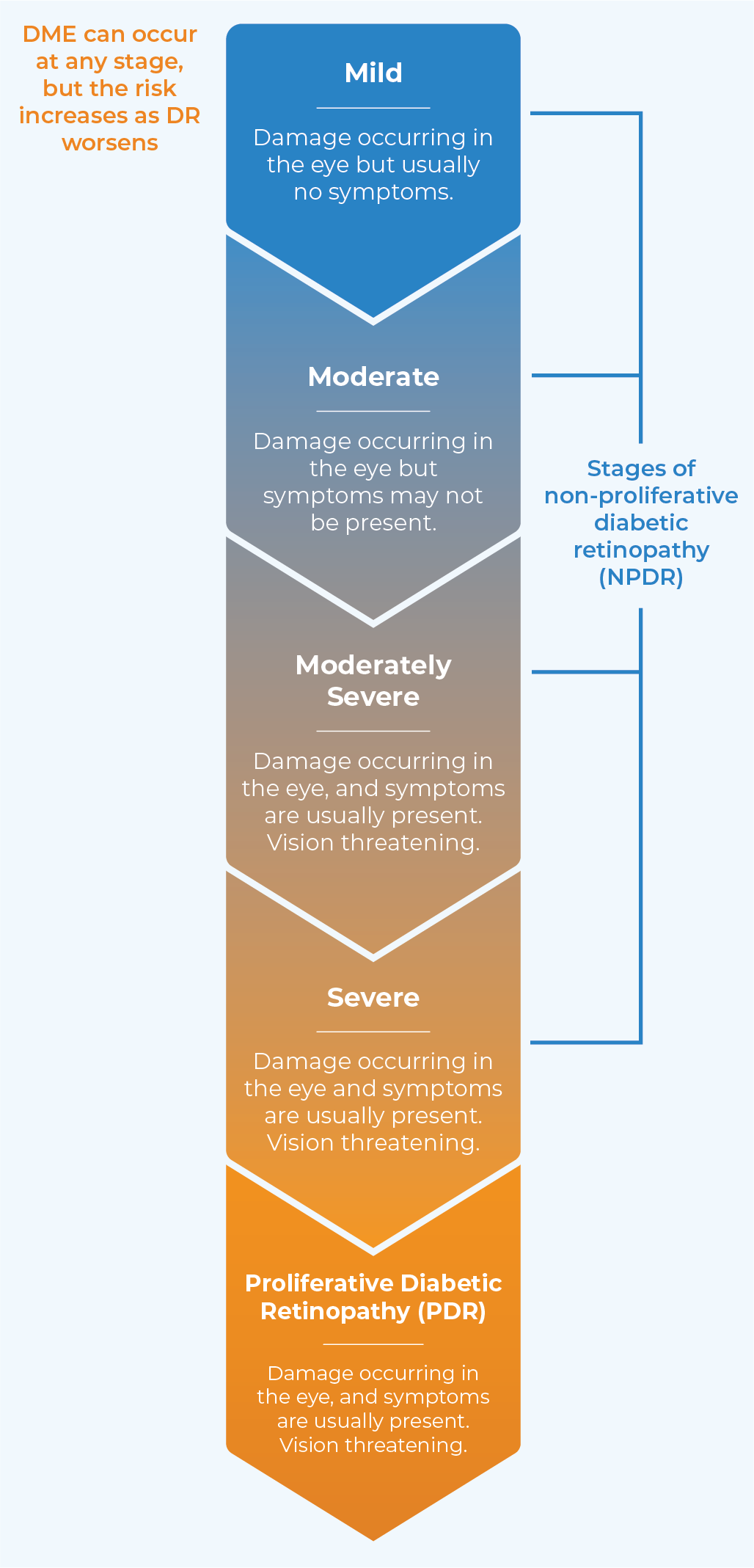WHAT IS DIABETIC EYE DISEASE?
High blood sugar levels due to diabetes cause damage to many parts of the body, including the small blood vessels in the eye.
Diabetic retinopathy and diabetic macular edema are two leading complications that affect patients with diabetes – both can lead to vision loss and blindness if left untreated.
EARLY DETECTION AND TREATMENT IS IMPERATIVE
DR progresses in stages and can do so quickly. Even if no visual symptoms are present, damage is occurring in the eye that can lead to vision-threatening complications, such as DME, at any time.

TODAY’S CHALLENGES
HOW KODIAK CAN HELP
Kodiak’s Antibody Biopolymer Conjugate (ABC®) medicines are designed to provide patients with diabetic eye disease long-interval dosing and greater therapeutic benefit than today’s therapies.
Tarcocimab tedromer, Kodiak’s lead investigational medicine, is designed to provide twice yearly dosing for the majority of patients with DR. Learn more.
KSI-501, our second investigational medicine, is a first-in-class bispecific ABC designed to address both vascular permeability and inflammation for high-prevalence retinal vascular diseases. Learn more.
REFERENCES
- IDF Diabetes Atlas. International Diabetes Federation. Accessed May X, 2023. https://diabetesatlas.org/
- National Diabetes Statistics Report. Centers for Disease Control and Prevention. Updated June 29, 2022. Accessed May X, 2023. https://www.cdc.gov/diabetes/data/statistics-report/index.html
- Diabetes and Vision Loss. Centers for Disease Control and Prevention. Accessed May 19, 2023. https://www.cdc.gov/diabetes/managing/diabetes-vision-loss.html
- Lee et al. Epidemiology of diabetic retinopathy, diabetic macular edema and related vision loss. Eye and Vis 2. 2015; 17. doi: https://doi.org/10.1186/s40662-015-0026-2.
- How to Promote Eye Health for People With Diabetes. Centers for Disease Control and Prevention. Updated March 3, 2022. Accessed May X, 2023. https://www.cdc.gov/diabetes/professional-info/health-care-pro/diabetes-eye-health.html
- Bressler et al. Persistent Macular Thickening Following Intravitreous Aflibercept, Bevacizumab, or Ranibizumab for Central-Involved Diabetic Macular Edema With Vision Impairment. JAMA Ophthalmol. 2018; 136(3): 257-269. doi:10.1001/jamaophthalmol.2017.6565










